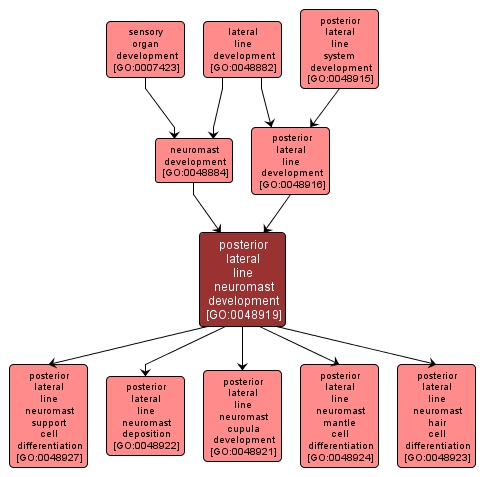| Desc: |
The process whose specific outcome is the progression of the posterior lateral line neuromast over time, from its formation to the mature structure. The neuromast is the sensory receptor of the anterior lateral line system and is composed of a population of sensory hair cells, and nonsensory supporting cells and mantle cells. Neuromast are located superficially on the epithelium or in lateral line canals. |














